- Home
- Robert Jordan
The Wheel of Time Companion Page 6
The Wheel of Time Companion Read online
Page 6
Allin. A dark-haired Andorman, with a half-beard shaved at the sides, who served under Uno in the Last Battle.
Allorallen. An Ogier-built city in Jaramide, one of the Ten Nations after the Breaking. Bandar Eban later occupied the same site.
Allwine, Rulan. See Rulan Allwine
Almadar. A noble House of Arad Doman including King Alsalam and Ramsid.
Alman, Dumera. An Aes Sedai who lived at the time of the formation of the White Tower.
Almandaragal. High Lady Suroth’s lopar.
Almen Bunt. An old Andoran farmer. He had a well-wrinkled, leathery face, half his teeth were missing, and his hands were gnarled, but his old man’s voice was strong, as was his body. Bunt met Rand and Mat outside The Goose and Crown and gave them a ride to Caemlyn. He traveled at night to avoid the merchants’ dust. He went to Caemlyn, which he thought was the grandest city there was, to see Logain, but stayed to support Morgase. When Morgase was under Rahvin’s influence, Bunt got into trouble for being a good Queen’s man, and left Caemlyn and went to his sister’s farm to help with her orchards after her husband died. He saw Rand when Rand came down from Dragonmount. Bunt went with other farmers to Merrilor and joined in the Last Battle.
Almindhra. The First Counselor of Tova, a nation that arose after the Trolloc Wars, located at the same site as Cairhien. Almindhra was one of three who sent armies into Shandalle against Artur Hawkwing in FY 943.
Almizar. A prosperous town in Amadicia, a hundred miles southwest of Amador. It was set in farm country with stone-walled pastures and thatch-roofed stone houses. Six tall watchtowers sat on its perimeter, but the town had no wall. The streets were paved with granite blocks, and lined with solid buildings of brick or stone, some gray, some black, many three or four stories high and most roofed in dark slate, the rest in thatch. Perrin and Tylee negotiated the acquisition of all the forkroot being cultivated here by the Seanchan. This was also where a Seanchan clerk died, filled with beetles; and where Perrin was almost assassinated by arrows.
Almoren. One of the Ten Nations. Its capital was Al’cair’rahienallen, later known as Cairhien; another city was Jennshain. Its king was Coerid Nosar at the signing of the Compact.
Almoren, Queen of. Her Right Hand, Jurith Dorine, wrote Commentaries on the Prophecies of the Dragon. Her rule included the year 742 AB in the Third Age.
Almoth. A nation that rose from the War of the Hundred Years. Its banner was blue for the sky above, black for the earth below, with the spreading Tree of Life to join them.
Almoth Plain. The former site of the nation of Almoth, lying between Tarabon and Arad Doman along the Aryth Ocean. Those two countries fought over it for over four hundred years.
Alms, Fellowship of. The beggars’ guild in Ebou Dar.
Almurat Mor. A Seanchan Seeker for Truth, about 5'10" tall, with yellow hair and blue eyes. He was in his middle years and good-looking, if too slender for Egeanin’s taste. As a Seeker, he had tattoos of a raven, a sign that he was property of the Imperial family, as were most Seekers for Truth and all of the Deathwatch Guards, and a tower, a sign that he was a Seeker, on each shoulder. His position was identified by a small, flat gold-bordered ivory plaque that he carried, engraved with a raven, the sign of the Imperial House, and behind it the Tower of Ravens, a symbol of Imperial justice. He was supposedly checking up on efforts to find and eliminate renegade sul’dam. He was suspicious of Egeanin. He thought that Tuon had been kidnapped in a White Tower operation led by Thom Merrilin. Mor believed in a complicated plot between Suroth and the White Tower involving Egeanin, among others. The disappearance of Egeanin, Bethamin and two other sul’dam, along with two damane who were Aes Sedai, confirmed this in his mind, but he felt that moving too openly might endanger Tuon. Mor also believed there had been some corruption of the levels of Seekers above him. He shared his beliefs with Karede, who bought into the notion provisionally.
Alnora. A Jenn Aiel woman who lived during the Breaking. Her husband was Jonai, and she was mother to Adan and Willim.
Aloisia Nemosni. The oldest member of the Kin. She was nearly six hundred years old and her strength level was at least 17(5) or 18(6). She was working as an oil merchant in Tear when Elayne and Nynaeve learned of the Kin. Elayne wondered if she would fall over dead if made to take the Three Oaths.
Alpert Mull. An Andoran farmer living between Four Kings and Market Sheran. He was a stolid man with a square face and square hands, both worn and grooved from hard work and worry. He wanted someone to talk to, and gave Rand and Mat a ride as well as scarves.
Alqam. A city or region in Seanchan that had pale-eyed inhabitants. While battling Rand’s army, Miraj thought about the named, honored regiments from different parts of Seanchan that were represented among his troops, including Alqam.
Alraed, Desandre. See Desandre Alraed
Alric. Siuan’s Warder. He was killed the day she was deposed.
Alrom. An ancient scholar who wrote of Mesaana’s schools in the War of Power.
Alruddin, Katerine. See Katerine Alruddin
Alsahhan, Sorelana. A scholar in the time of the Trolloc Wars who wrote about Darkhounds.
Alsalam Saeed Almadar. The King of Arad Doman, Lord of Almadar, High Seat of House Almadar. He was elected by the Council of Merchants, which could remove him with a three-quarter vote. His whereabouts became something of a mystery; he was kidnapped by Elaida, and the Shadow used his absence to its favor. Alsalam seemed to issue a stream of contradictory orders to Ituralde and others, but they in fact came from Graendal. He was found by Rand and rejoined Rodel Ituralde, but was killed in the Last Battle.
Alsbet Luhhan. The wife of Haral Luhhan, the blacksmith of Emond’s Field. She was born in 955 NE. Alsbet was a big woman—not as large as her husband, but still as big as most men and almost as strong as her husband, and her temper was worse than his. It was a toss-up whether Alsbet or Daise Congar was the strongest woman in the Two Rivers. She had a round face and a gray braid. She and Haral had no children, but when Haral took on Perrin as an apprentice, he lived with them. Alsbet and Haral were arrested by Whitecloaks. At first it was only Haral the Whitecloaks wanted, but Alsbet made such a fuss, assaulting several Whitecloaks with a blunt instrument, that she was arrested as well. Perrin gathered a group of friends and freed them. She helped organize the defense of Emond’s Field.
Alsera. A Wise One of the Salt Flat sept of the Nakai Aiel. She served as Bruan’s Wise One at Shiagi Hold. Although she was not a dreamwalker, the dreamwalkers spoke to her in the dream.
Alshinn, Ellaine Marise’idin. The translator of The Karaethon Cycle: The Prophecies of the Dragon.
Alstaing, Mistress. A Taraboner lacquerware merchant who played Piri in The White Ring in Maderin, the “hell” to which Mat and Thom brought Tuon and Selucia. Mat diced with the woman and the other gamblers with her, to his own benefit.
Altalin, Lady. A noblewoman of Amadicia who served as a lady-in-waiting to Morgase under the command of Pedron Niall. She had a plump face and made a bad pun about Galad. After Ailron’s Disaster, she became a da’covale, likely in some menial capacity such as a chambermaid or kitchen helper.
Altara. A nation in the south. Little unified it except the name. The people of Altara thought of themselves as inhabitants of a town or village, or as this lord’s or that lady’s people, first, and only second if at all as Altaran. Few nobles paid taxes to the crown or offered more than lip service, if that. Its capital, Ebou Dar, rose on the ground that was once a city called Barashta, in the nation of Eharon, before and during the Trolloc Wars, though the major part of that city lay on land where the Rahad later stood. Altara’s sigil was two golden leopards, one above the other: it was referred to as the Golden Leopards or simply the Leopards. Its banner was the Golden Leopards on a field checked four-by-four in red and blue; red was next to the staff on the topmost row.
The Trolloc Wars did not truly envelop Eharon until late, but not a stone remained in the present that could be linked to Barashta,
the city having been destroyed by Trollocs. Altara was founded circa FY 1112 by Lord Maddin Todande, who claimed to be a descendant of the last Queen of Shiota and may actually have been so. Numerous earlier attempts to reestablish Shiota had failed, though one, early in the War of the Hundred Years, lasted for fifty years and three rulers. Maddin saw that the old nations were finished and made his claim to a new nation. His success was no doubt aided by the end of the war only five years after he was crowned. King Maddin and his first three successors were strong and respected rulers over a strong and increasingly wealthy land—at least, increasingly wealthy once the war finally ended. Approximately one hundred years after the war, however, Anarina Todande ascended to the throne, a capricious ruler at best and incompetent at worst. During her reign, Altara sank into the near anarchy which prevailed until the arrival of the Seanchan. In the space of twenty years, Anarina drained the national treasury and impoverished House Todande; she was deposed and murdered, and her House never recovered. No House after Todande held the throne of Altara for more than two generations until Beslan, the son of Tylin, became king, although he ruled only with the permission of the Seanchan.
The Seanchan occupation of the city was not easy at first, but it was relatively benevolent. The Seanchan, in effect, simply overlaid their system on top of the one that was already there. Seanchan soldiers were as subject to law as the people in the conquered territory. There was little interference with local custom; duels were not outlawed, but the Seanchan required that they be witnessed, and combatants were required to pay a fee. Street crime was cleared up, and corrupt magistrates were replaced; looting became minimal, though taxes had been imposed, and there were fines. Some holdings of corrupt officials and nobles involved with them were confiscated, and the owners themselves made property. Tylin, and then Beslan, reached an accommodation. The crown was retained and recognized by the Seanchan, with a pledge to uphold the Empress; in return, looting was stopped, and the present laws were left in effect, though Seanchan law held as well. Part of the taxes went to the crown, more than had been collected before, and the Seanchan recognized the crown as ruler over all of Altara, with nobles who refused acknowledgment and fealty (and by implication the Empress) held to be in rebellion and subject to confiscation and enslavement. This deal left the crown better off than before, with a chance to unify Altara.
Given the political situation in Altara, one could not say that there was any sort of national army. When an army was raised, it consisted of the levies of various nobles, who usually squabbled over the command and were known to take their soldiers away from the army because of such quarrels even in dire circumstances. Altara never had a standing force such as the Queen’s Guards in Andor or the Defenders of the Stone in Tear. Any ruler who attempted to form such a group would have been pulled down immediately by the nobles, jealous of their own power.
Altara had even more regional differences in custom than most other lands. For example, the marriage knife was an Ebou Dari custom, not found more than fifty to a hundred miles from the city; dueling customs, on the other hand, were much more widespread. The marriage knife was one that Ebou Dari women wore on a necklace, hanging hilt-down; it was part of the marriage proposal and marriage ceremony, and was given to the woman with the words “To kill me if my heart proves untrue.” It was sometimes used for just that. A woman in Ebou Dar who killed her husband was presumed to have had justification unless proven otherwise. This extended to other women who killed men, to a large extent. The knife was fairly small, but its four-inch blade could reach vital organs. The necklace alone was worn as a sign that a woman was betrothed. There was a system of colored stones on the hilt of the knife marking sons and daughters, living and dead: a white stone for each son and a red stone for each daughter. A red border around a son’s stone or a red setting indicated that he died from a duel; a white border or white setting did the same for a daughter. A black setting showed that the child died from another cause. Women saw a red or white setting as a source of pride, whether the stones were pearls and firedrops or colored glass. Many Ebou Dari women removed the stones of their children past sixteen who refused a duel, and never acknowledged them again. A widow used a white sheath on her marriage knife to signify that she had no intention of marrying again, a blue sheath meant a widow who was looking, or at least available, a green sheath indicated a married woman with a husband living, and a red sheath indicated a married woman who had forbidden her husband the house. Red and blue together meant divorced and willing to try again.
Ebou Dar was in many ways very matriarchal. In the vicinity of the city, it was women who asked men to marry; for a man to ask was considered incredibly pushy and overbold. Farther out in Altara, either men or women could ask, though in the north, close to Andor, the custom was for men to do the asking. In Altara, it was not at all uncommon for a woman to make arrangements as to who her husband would marry if she died. This custom was more common in the south than in the north, but it was done fairly far north by some.
Altarans as a whole were touchy about their honor. The region around Ebou Dar was where folk were the touchiest. While no more took part in dueling than anywhere else in Altara, both men and women around the city (especially commoners) had a custom of knife, and occasionally whip, duels, surrounded by elaborate custom, and while men rarely challenged women, women could and did challenge men. Elaborate rules and customs governed duels. Lower classes were prohibited from dueling with swords or on horseback. Duels among upper-class men were much more likely to involve swords, but they, too, often used daggers. Duels could be to the death, but most were to first blood. The victor in a mortal duel was required to pay a condolence call on the widow or widower if there was one. These visits could be sticky for a number of reasons, ranging from the bereaved’s desire for revenge to a desire to be consoled in the age-old fashion. It was accepted as gospel that noblewomen did not fight duels, but it was widely known that they did; one was simply not supposed to acknowledge the fact. Women had their own customs and rituals for duels, and shrouded them in deepest secrecy.
Around Ebou Dar, certain crafts, trades and property rights belonged to men and certain others to women. Others were open. For example, wine and ale (though ale and beer were not popular among the locals) could be made and sold by either sex. And while only men could own ships, either sex could act as a broker for the cargoes. Women could own land, keep inns, weave cloth, sell fish or fowl to the public and butcher anything smaller than cows. Men could own or build ships or boats, keep alehouses and taverns that had no rooms to let, fish, weave rugs and butcher cows.
In and around Ebou Dar, death, daggers and the sea were considered female. Ships, swords and trade were considered male.
Altara produced fine lacquerwork and was famed for its lace. It also produced carpets and tapestries, although these were not considered of the best. There were many olive orchards in Altara, providing oil for lamps and cooking. They harvested salt from salt wells. From the waters around Altara came pearls, mother-of-pearl and fish. Shipping and shipbuilding were big business in Ebou Dar, which was a major port, serving a considerable portion of what lay inland. They had a major portion of the trade coming out of Amadicia and Ghealdan, for example, and a good deal from Tarabon as well.
Altara Causeway. A wide, packed dirt road leading from Illian to roads reaching Altara and Murandy. It lay on the other side of the River Manetherendrelle and was reached by ferry.
Altaran Marches. The place where Dyelin’s father died in a skirmish.
Altaran Noon. An expression referring to the pressure applied by Altarans that made the nation too hot to hold an occupying force of Whitecloaks.
Alteima. A High Lady of Tear who was the wife of Tedosian. She was tall and slender with large brown eyes and long black hair hanging halfway to her waist. She was High Lord Carleon’s lover as well as High Lord Tedosian’s wife, and when Tedosian arranged Carleon’s death, she poisoned Tedosian. Tedosian was given into Estanda’s care, h
owever, and recovered. Alteima was given the task of seeing to the transfer of relief supplies to Cairhien by Rand, but she fled instead, knowing that not only would Tedosian try for revenge, but Estanda also hated her and would take any chance to bring her down. She fled to Andor, and became enthralled by Rahvin. She was one of seven women he kept as pets in addition to Morgase. She was in the Royal Palace when Rand took over and she fled, as did Rahvin’s other pets. The death of Rahvin caused the effects of Compulsion to fade; she had the memory of things that happened, but no understanding of why. She was deathly afraid of returning to Tear and her estates, so she became a refugee and found work as a lady’s maid.
Althyn Conly. A Two Rivers novice with the rebel Aes Sedai. She tried to convert two cups to cuendillar at the same time as Bode Cauthon and wound up with an unusable lump.
Aludra Nendenhald. An Illuminator and onetime Mistress of the chapter house in Cairhien. She was born in 959 NE. A pretty woman, slender and about 5'5" tall, she had large dark eyes and a small full mouth that seemed on the point of a pout, or a kiss. She usually wore her dark hair in a multitude of slim braids that went halfway down her back, but later, in Amadicia, she wore it loose because of feelings there about Taraboners. Her Taraboner accent was thick, and, by nature, she kept to herself. She lost her position at the Cairhien chapter house after events which led to riots, the burning of the granaries, the death of the King and civil war. One of the events was the burning of the chapter house when Rand and Loial sought refuge there from Trollocs and accidentally set off a display intended for Galldrian. Aludra fled, pursued by Tammuz and other men from the guild, and in a barn in Aringill was rescued from them by Mat, who was accompanied by Thom. As a reward, she gave Mat some fireworks, which he eventually used to blow an arrowslit in the Stone of Tear wide enough for him to enter. She was an experimenter, and one thing she worked on which she thought would make her fortune was what she sometimes called “strikers” and sometimes “firesticks,” which were kept in holes drilled into a block of wood to keep them from rubbing against one another, which sometimes made them ignite. She joined Valan Luca’s traveling show, where she encountered Thom once again, though she refused to acknowledge him. She also met Elayne and Nynaeve, though she knew them only by their traveling personae, as well as Juilin and Birgitte. With the circus, she was in Ebou Dar when the Seanchan invested the city. The Seanchan were not interested in fireworks, though—something that irritated Aludra no end—since the Sky Lights produced by trained damane were much more spectacular. She met Mat again there, and traveled with him when he left Luca’s show. They developed the idea of “dragons” which fired shells that Aludra called dragons’ eggs. The dragons were transported on wagons called dragon carts. They were used to great effect in the Last Battle.

 Conan the Unconquered
Conan the Unconquered Conan the Triumphant
Conan the Triumphant The Eye of the World
The Eye of the World The Great Hunt
The Great Hunt Conan the Victorious
Conan the Victorious The Dragon Reborn
The Dragon Reborn The Fires of Heaven
The Fires of Heaven Winter's Heart
Winter's Heart Lord of Chaos
Lord of Chaos The Shadow Rising
The Shadow Rising Conan the Defender
Conan the Defender The Strike at Shayol Ghul
The Strike at Shayol Ghul The Path of Daggers
The Path of Daggers A Memory of Light
A Memory of Light Knife of Dreams
Knife of Dreams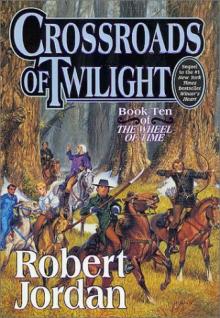 Crossroads of Twilight
Crossroads of Twilight Conan the Invincible
Conan the Invincible The Gathering Storm
The Gathering Storm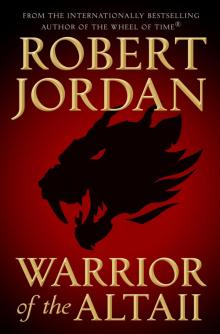 Warrior of the Altaii
Warrior of the Altaii A Crown of Swords
A Crown of Swords The Wheel of Time
The Wheel of Time Towers of Midnight
Towers of Midnight Conan Chronicles 2
Conan Chronicles 2 Conan the Magnificent
Conan the Magnificent New Spring
New Spring What the Storm Means
What the Storm Means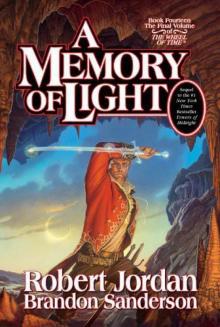 A Memory of Light twot-14
A Memory of Light twot-14 New Spring: The Novel
New Spring: The Novel Towers of midnight wot-13
Towers of midnight wot-13 A Memory Of Light: Wheel of Time Book 14
A Memory Of Light: Wheel of Time Book 14 A Crown of Swords twot-7
A Crown of Swords twot-7 Lord of Chaos twot-6
Lord of Chaos twot-6 The Great Hunt twot-2
The Great Hunt twot-2 The Shadow Rising twot-4
The Shadow Rising twot-4![Wheel of Time-11] Knife of Dreams Read online](http://i1.bookreadfree.com/i1/04/03/wheel_of_time-11_knife_of_dreams_preview.jpg) Wheel of Time-11] Knife of Dreams
Wheel of Time-11] Knife of Dreams The Dragon Reborn twot-3
The Dragon Reborn twot-3 The Wheel of Time Companion
The Wheel of Time Companion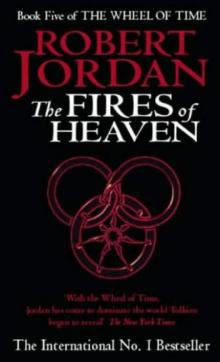 The Fires of Heaven twot-5
The Fires of Heaven twot-5 Prologue to Towers of Midnight
Prologue to Towers of Midnight The Path of Daggers - The Wheel of Time Book 8
The Path of Daggers - The Wheel of Time Book 8 The Path of Daggers twot-8
The Path of Daggers twot-8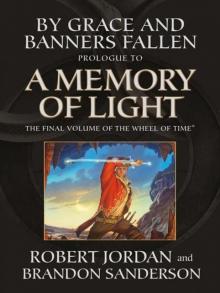 By Grace and Banners Fallen: Prologue to a Memory of Light
By Grace and Banners Fallen: Prologue to a Memory of Light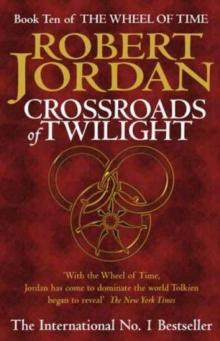 Crossroads of Twilight twot-10
Crossroads of Twilight twot-10 The Gathering Storm twot-12
The Gathering Storm twot-12 Winter's Heart twot-9
Winter's Heart twot-9 Knife of Dreams twot-11
Knife of Dreams twot-11 New Spring: The Novel (wheel of time)
New Spring: The Novel (wheel of time)